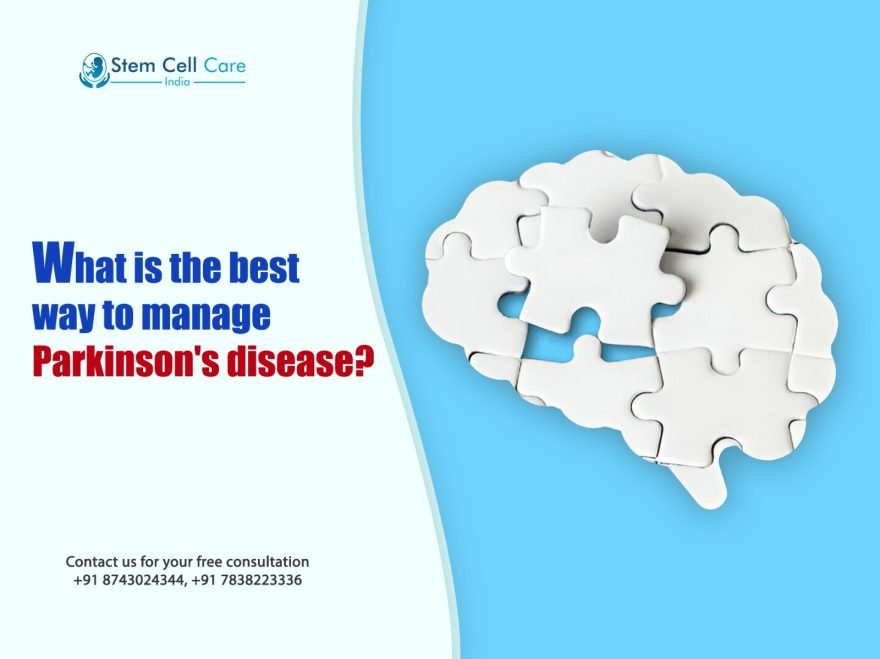Table of Contents
Neurological conditions like Parkinson’s disease are progressive neurological disorders that affect movement control. It is commonly classified as tremors, rigidity, bradykinesia (slowness of movement), and postural imbalance. While there are a variety of treatments available to manage the symptoms, recent advances in the field of stem cell therapy have emerged as a new Parkinson’s treatment, offering hope for patients.
Overview Parkinson’s Disease
This condition is caused due to the degeneration of dopamine-producing neurons in the substantia nigra, a region of the brain that controls movements. Dopamine is a neurotransmitter important for transmitting signals that coordinate smooth and balanced muscle movements. The loss of dopamine, which leads to the motor symptoms associated with Parkinson’s disease.
Symptoms
Parkison’s disease symptoms consist mainly of four symptoms, like
- Slow Movements
- It’s difficult to maintain balance or walk.
- Stiffness or tightness of muscle.
These symptoms include tremors or trembling, and shaking hands are generally the telltale symptoms of Parkinson’s, as are difficulties maintaining balance and coordination.
The Promise of Stem Cell Therapy
Stem cell therapy is an ongoing, advanced treatment that has shown some good promise in treating Parkinson’s disease. Stem cells are unique, they have the ability to differentiate into different types of cells, such as neurons. The objective of stem cell therapy in Parkinson’s disease is to replace the damaged neurons and restore brain functions.
Types of Stem Cells
- Embryonic Stem Cells (ESCs)
These types of cells are derived from initial-stage embryos and have the potential to develop into any cell type in the body, such as dopamine-producing neurons.
- Induced Pluripotent Stem Cells (iPSCs)
iPSCs are adult cells that have been reprogrammed to an embryonic-like state, enabling them to develop into various cell types. These cells are particularly promising because they can be derived from the patient’s own cells, minimizing the risk of immune rejection.
- Mesenchymal Stem Cells (MSCs)
Mesenchymal stem cells are also adult cells found in bone marrow, adipose tissue, and other locations. MSCs have shown some potential for minimizing inflammation and protecting neurons from degeneration.
How Stem Cell Therapy Works
- Cell Replacement: By the differentiating ability of stem cells into dopamine-producing neurons and transplanted into the brain. These new neurons can replace the lost cells and restore dopamine levels.
- Neuroprotection: Stem cells release growth factors and molecules that can protect existing neurons from damage further and promote their survival.
- Modulation of the Immune System: Some stem cells have immunomodulatory properties that can reduce inflammation in the brain, which is believed to contribute to the progression of Parkinson’s disease.
Research & Clinical Trials
Studies and research on stem cell disease for Parkinson’s disease are still ongoing, with several promising clinical trials:
- Preclinical Studies: These animal models of Parkinson’s disease have demonstrated that transplanted stem cells can survive, integrate into the brain, and enhance motor function.
- Clinical Trials: In the initial phase, clinical trials have shown the safety and feasibility of stem cell therapy in humans. Patients have demonstrated some improvements in motor function and quality of life.
- Future Directions: Researchers are improving protocols for differentiating stem cells into dopamine-producing neurons and developing methods for delivering these cells into the brain easily and effectively.
Advantages of Stem Cell Therapy
This therapy offers several advantages over traditional treatments:
- Potential to Reserve Disease Progression
Stem cell therapy seeks to replace lost neurons and raise dopamine levels in order to address the underlying cause of the disease, in contrast to other medications that only treat its symptoms.
- Long-Lasting Effects
There could be significant advantages to stem cell therapy, which would reduce the need for ongoing drug adjustments.
- Improved Quality of Life
After restoring normal brain function, stem cell therapy can significantly enhance motor function and the overall quality of life.
- Reduced Side Effects
Old and conventional medications for Parkinson’s disease can have side effects, like dyskinesia. Stem cell therapy may minimize the reliance on these medications and their associated side effects.
Challenges & Considerations
- Safety: It ensures the safety of stem cell therapy, which is paramount. Studies and research are working to minimize risks like infection and immune rejection.
- Efficacy: Robust research is needed to confirm the efficacy of stem cell therapy and understand its full potential.
- Accessibility: It is currently, stem cell treatment is expensive and may not be widely available. As studies progress, it is hoped that the treatment will become more accessible to patients.
Wrap Up
An innovative method of treating Parkinson’s disease is demonstrated by stem cell therapy. Because stem cells target the loss of dopamine-producing neurons, the disease’s primary cause, they may be able to treat symptoms and even slow or even stop the disease’s progression. With new treatment options and improved patient outcomes, stem cell therapy may turn out to be the most effective way to manage Parkinson’s disease as research advances. You can find out more information about stem cell therapy by speaking with Stem Cell Care India if you are interested in it.


